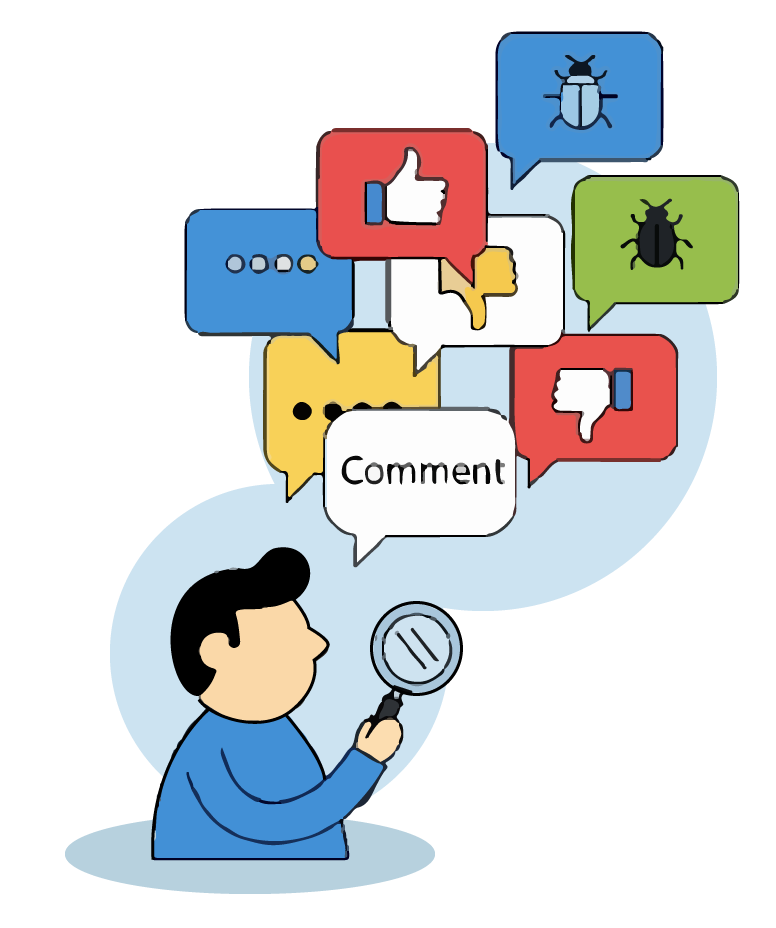Now Reading: Agile Backlog Refinement: Integrating User Feedback Case Study
-
01
Agile Backlog Refinement: Integrating User Feedback Case Study
Agile Backlog Refinement: Integrating User Feedback Case Study
How “FeedbackLoop SaaS” systematically processed and prioritized hundreds of user suggestions after a major feature launch to build a truly user-driven roadmap.
The Challenge: Drowning in a Sea of Suggestions
FeedbackLoop SaaS had just launched a highly anticipated new project management module. The good news: users were highly engaged. The bad news: they were inundated with feedback. Hundreds of suggestions, bug reports, and feature ideas poured in through support tickets, community forums, and social media. The product team felt overwhelmed, struggling to separate the signal from the noise. They had a massive, unorganized list of requests and no clear process for deciding what to act on, leading to a feeling of being purely reactive.

The Solution: A Thematic Refinement Process to Find the Signal
The product manager organized a dedicated refinement session with the UX researcher and a customer support lead to process the wave of feedback. They used the Agile Backlog Refiner to create a structured, data-driven plan.
- Synthesizing Raw Feedback (Step 1): Before the main session, the PM and UX researcher triaged all incoming feedback, identifying common themes and summarizing them in the “Stakeholder Input” field. Key themes emerged: “Reporting is too basic,” “Needs more third-party integrations,” and “The mobile UI is confusing for adding tasks.” This initial synthesis was crucial for the next step.
- Creating Thematic Epics (Step 2): In the session, they used these themes to create new, user-centric epics: “Enhanced Reporting Suite,” “Workflow Integrations (Slack, Zapier),” and “Mobile UI/UX Improvements.” This immediately bucketed the chaotic list of individual requests into larger, strategic workstreams.
- Prioritizing by Impact and Volume (Step 3): Under each epic, they created PBIs based on the most frequent and impactful user requests. For the “Enhanced Reporting Suite” epic, they added PBIs like “Add PDF Export for Reports,” “Implement Custom Date Range Filters,” and “Create a Manager-Level Summary Dashboard.” They then used MoSCoW to prioritize these, cross-referencing which requests came from their highest-value enterprise customers. “PDF Export” was a clear “Must Have,” while the summary dashboard was a “Should Have.”
- Translating Requests into Actionable Stories (Step 4): For the top-priority items, they crafted user stories that captured the ‘why’ behind the request. The raw feedback “we need pdf exports” was translated into a powerful user story: “As a project manager, I want to export my progress report as a PDF so that I can easily share it with my leadership team who don’t have access to the tool.” This context was vital for the development team.
The Outcome: A Truly User-Driven Roadmap
The process turned a reactive, stressful situation into a proactive, strategic planning activity that was deeply rooted in user needs.
- From Chaos to Clarity: The team now had a clear, prioritized backlog that directly reflected the most important feedback from their user base. They could confidently say they were working on the things that mattered most to their customers.
- Data-Informed, Not Emotion-Driven, Decisions: By theming the feedback first, they could prioritize work based on the volume and value of user requests, rather than being swayed by the single loudest voice or the most recent complaint.
- Closing the Loop and Building Goodwill: The product manager was able to go back to the community forum and support tickets and say, “We heard you. Based on your feedback, ‘PDF Exports’ and ‘Custom Date Ranges’ are now planned for our upcoming sprints.” This simple act of communication demonstrated responsiveness and built immense customer loyalty.
The Agile Backlog Refiner provided the necessary structure to systematically process a high volume of raw user feedback and transform it from a noisy list into a refined, prioritized, and user-centric roadmap.
Tool Spotlight: How the Refiner Made the Difference
- Step 1 – Stakeholder Input Field: This free-text area was the perfect place to synthesize and centralize the raw themes from hundreds of feedback sources before the main refinement session began.
- Epic-to-PBI Hierarchy (Step 2): This structure was ideal for thematic analysis, allowing the team to group dozens of small, related requests (PBIs) under a single strategic theme (the Epic).
- MoSCoW Prioritization (Step 3): This framework provided a clear and objective way to rank the newly created PBIs based on business value and user impact, ensuring they worked on the most important improvements first.

